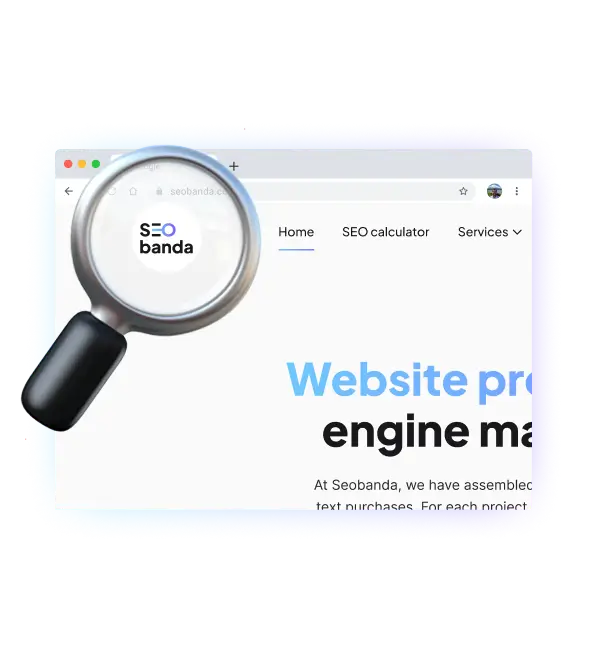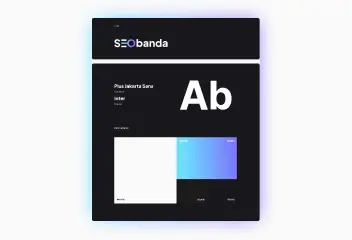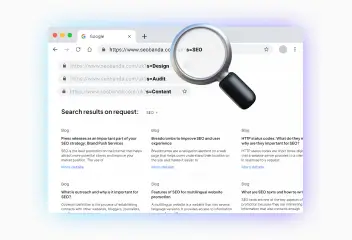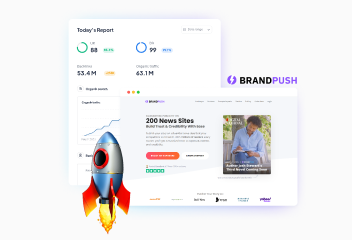Logo for the website: How to create a cool logo?
A logo is the visual face of your brand. It creates the first impression of your business and influences its recognition. Try to think of the logos of Nova Poshta or Starbucks right now. They have quite simple and recognizable logos that immediately come to mind when you think of these brands.



How to create a website logo correctly?
- Define your company’s values and goals. Think about the core values of your brand, what you want to show with this logo, and what message you want to convey. For example, if you are positioning yourself as a simple people’s company, the Volkswagen logo is an example. They have the slogan “Volkswagen – the car for the people” and have a similarly simple logo.
- Identify your target audience. Analyze what their interests and needs are and what they like.
- Do a competitor analysis. Analyze what logos your competitors have and try to determine why they chose this style. Determine what you like about their logos and what you don’t and make your own unique mark.
- Choose the type of logo. There are different types of logos: textual (consisting only of text, usually a company name or abbreviation. Example, Google), graphic logo design (uses only a graphic symbol, such as the Apple logo), and combined logo (combines text and graphics, such as Adidas). Determine which type suits you best, or better yet, try to create several versions and determine which style integrates best with your brand.
- Choose a logo style. They can be minimalist (simple shapes and minimal details), vintage (looks old and uses retro elements), futuristic (uses modern and innovative elements), etc. It is clear that vintage style, for example, is not suitable for a modern IT company, so you should take a responsible approach to choosing a style that is relevant to your topic and niche.
- Choose a color scheme. Depending on what you want to broadcast, you should choose the appropriate colors, for example, red (energy, passion, attention), blue (reliability, calmness, professionalism), green (nature, health, balance). Analyze what attracts the attention of your potential customers and best describes your brand
- Color combinations. Choose colors that contrast or are adjacent to each other on the color wheel. This will create a harmonious logo that will look more professional and attractive.
- Use specialized tools. Canva is a great tool for creating logos. It is easy to use and has many templates that will suit any situation. You can also use LogoMaker to create a logo. This is a tool that allows you to quickly create logos using various elements.

Increase visibility
for your business: SEO solution for growth!


Tips for creating a logo
- Make it simple and easy to remember. Avoid a lot of details. People are drawn to simplicity and clarity.
- Make sure that your logo looks good in different sizes and on different media (business cards, website, promotional materials). This is especially important when creating a responsive design, as it affects not only the appearance of your website but also SEO performance.
- Make sure that the logo is unique, does not have too many popular and frequently used elements, and stands out from the crowd. The main task of the logo is to evoke associations with your brand, so it should not look like another logo, because then there will be confusion and there is a possibility that your brand mark will be associated with another brand.
- Keep a balance between modern trends and classics to ensure that your logo remains relevant for a long time. But no matter how much you want your logo to be eternal and always attract people’s attention, it’s very difficult (there are only a few such stories in the world). Therefore, sooner or later you will have to update your logo and make it more trendy and innovative


The importance of different colors when creating a logo

The color of your logo is very important for brand perception. It’s the first thing people notice, and it’s the color scheme that determines whether a person will look at your logo and want to learn more about your brand. So what do some of the most popular colors mean?
- Red: Often associated with activity, status, and willpower. Red can stimulate the appetite and attract attention, which is why it is often used in food or sports-related industries.
- Blue: associated with calmness, trust, and professionalism. Often used in business, finance, and technology, as it creates the impression of stability and reliability.
- Green: symbolizes naturalness, health, and ecology. Often used by businesses that promote healthy lifestyles, eco-friendly products, or agro-goods.
- Yellow: an active and bright color associated with the sun and joy. Yellow attracts attention and can stimulate communication and fun, and is used in a variety of areas and industries, from retail to technology.
- Black: associated with elegance, stability and solidity. It is used to enhance the image of premium brands and create an impression of solidity.
- White: symbolizes purity and simplicity. This makes it popular in logos of medical institutions, technology, and fashion.
- Orange: associated with activity, optimism, and dynamics. Orange is often used for brands that offer energetic and dynamic products and services.
- Purple: elegance, intelligence. Purple is often associated with knowledge and creativity, which makes it popular for brands in the fields of education, technology, and the arts.
- Gray: neutrality, transparency, professionalism. Gray is often used to emphasize minimalism and modernity in design, as well as to create the impression of seriousness and reliability.


Where to place the logo on the website?
- Home page: Place your logo in the upper left or center part of the header. This is where it attracts attention and serves as a key brand element on your site. It’s also important to make the logo clickable so that users can get to the homepage from any other part of the site.
- Responsive design: check that the logo looks good on different devices. It should be clear enough and visible both on small mobile devices and on large computers. The logo should not be too big or small compared to other elements on the site.
- Contrast and background: make sure that the logo stands out against the background on which it is placed. Use colors and tones that make your logo more visible and clear. If possible, use a clean background to ensure maximum clarity.
- Consistency: Use the logo in the same style as the overall brand image of your website. This includes the use of color palette, fonts, style elements, etc.

Increase visibility
for your business: SEO solution for growth!


Conclusion
A logo definition is the first thing a person sees when interacting with your brand. If you choose the wrong color when designing a logo, the puzzle may not fit together. For example, you are engaged in environmental protection and eco-friendly products, and your logo is an aggressive red color. People will not understand how to perceive it. This article provides some practical tips for creating logos that you should follow if you want to create a memorable brand. If you are tired of your design and consider it outdated, SEObanda will help you redesign your logo and website and give them a second life!
You may also like it

Brand identity: The key to brand recognition and SEO success
Every product has its own unique feature that sets it apart from other brands. It could be a special font, a unique mascot, or an interesting logo with the right...

What is a dynamic URL and its impact on SEO
A dynamic URL (Uniform Resource Locator) is a web address that changes depending on the user's request or specific parameters. It differs from a static

Press releases as an important part of your SEO strategy: Brand Push Services
SEO is the best promotion on the Internet that helps attract more potential clients and improve your market position. The use of press releases is an important SEO...












